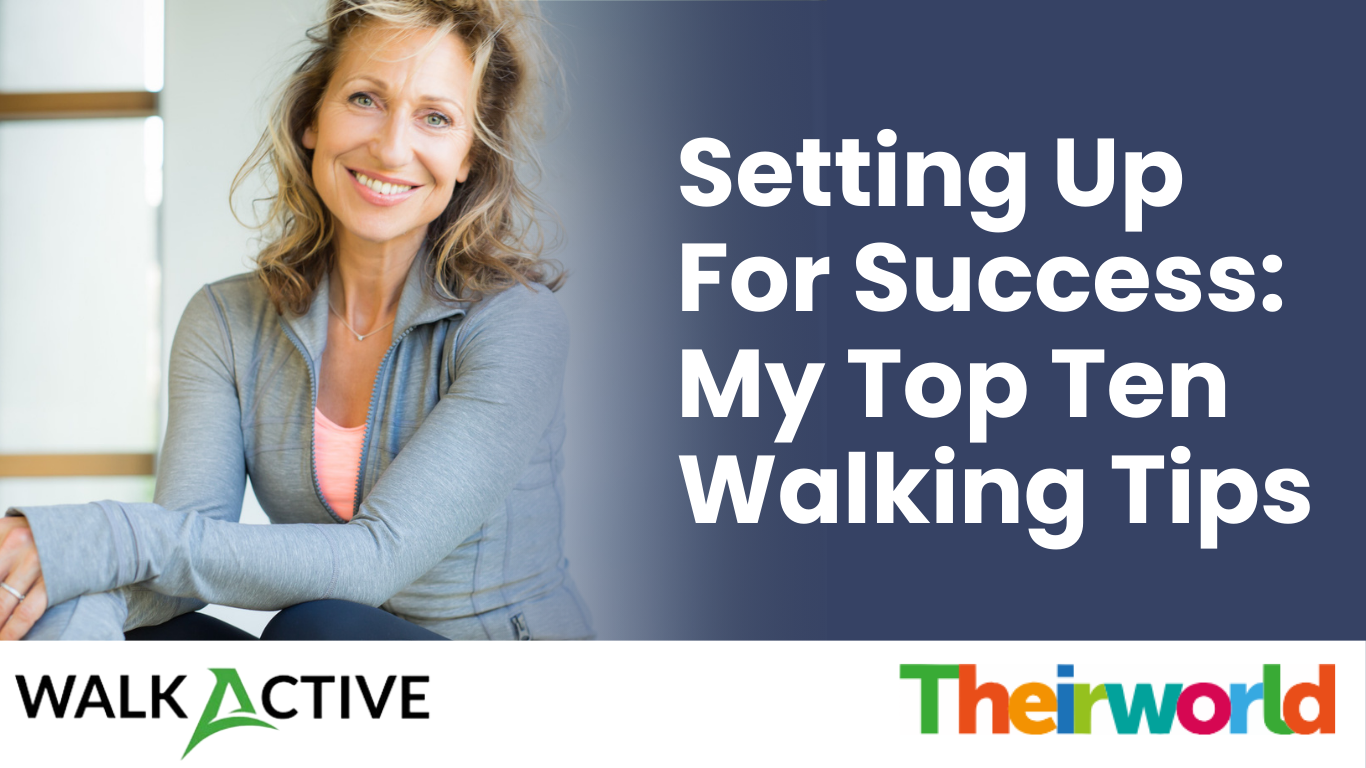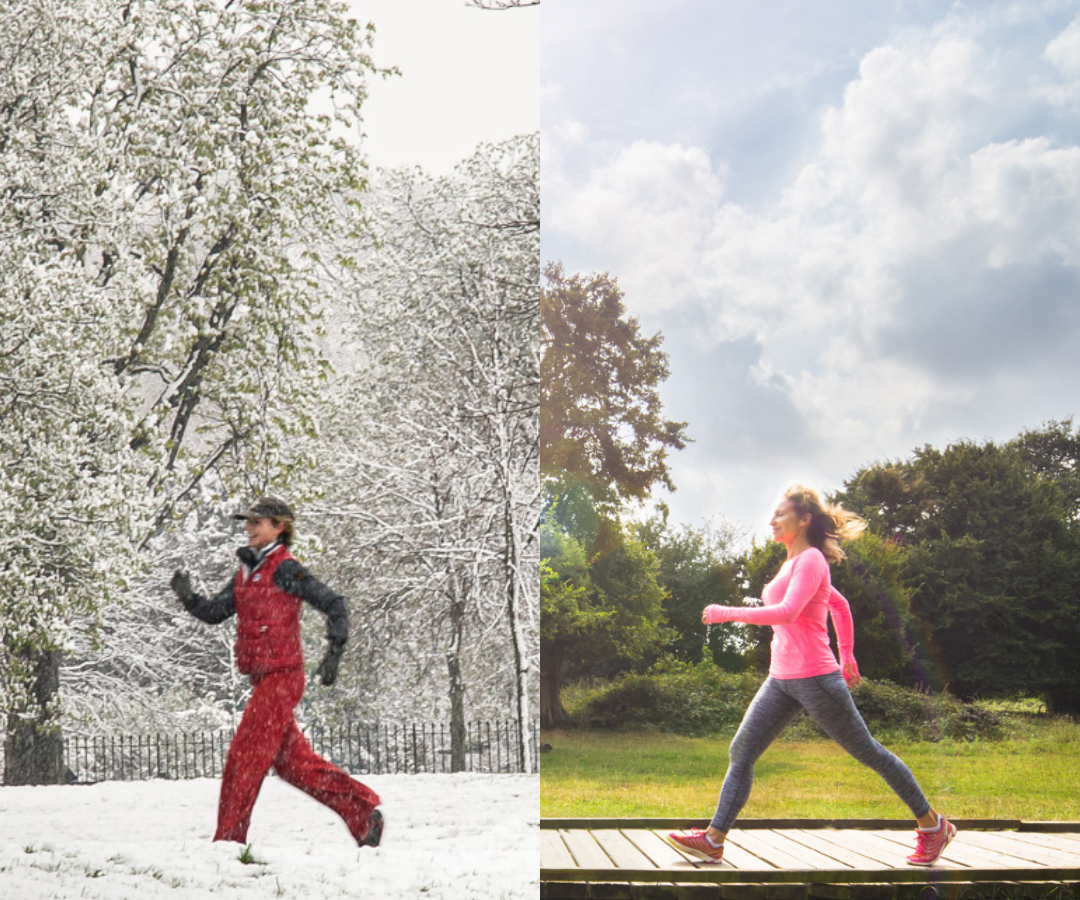
This summer, WalkActive is partnering with global children’s charity Theirworld. Participants in the charity’s upcoming walking challenge, which will raise money to support Ukrainian children’s education, have access to a package of resources from us, including motivating walking sessions set to music. To further support participants, I recently shared my top ten walking tips for improved technique, speed and step count. But if you’re not taking part in the challenge, don’t worry; you’ll find all ten pointers right here in this post.
1. Think about your abdominal muscles
One of the things I’ve noticed during my 25+ years in the fitness, health and wellbeing space is that people have a tendency to pull their abdominal muscles in tightly when they walk. This generates tension in the lower spine and makes the glutes contract, which creates misalignment through your body. Instead, think about contracting them in a lengthened manner, pulling 20% in and 80% up.
2. Focus on arm swing for speed
A swing is not a miss when it comes to walking! Increase your walking speed by focusing on increasing your arm swing rather than just moving your legs faster. A smooth and rhythmical arm swing can help lengthen your stride, making your walk more effective.
3. Avoid using hand weights
Refrain from walking with hand weights. By gripping with your hand, you create tension in the shoulder girdle, negating its ability to have full rotational movement through the upper spine, which we want because it improves our posture. If you want to add resistance for cardiovascular fitness, opt for a weighted vest instead.
4. Know your micro-climate
Sometimes, getting outside to walk can be a challenge. By identifying factors that create resistance we can find ways to work around them. Weather is a big one, which is why I suggest identifying the most conducive times for walking based on your local climate and heading out during those periods.
5. Break your day into time zones
Another way to get more steps into your day is to split your day into three- or four-hour time zones and aim to incorporate movement into each zone. Give yourself a target of 2,000 – 3,000 steps to achieve during each one. This will contribute to your daily step goal and combat excessive sitting.
6. Piggyback movement into daily habits
This is such a great hack if you want to move your body more during the day! Integrate movement into your daily habits such as checking emails or making coffee. This can help to increase overall activity levels throughout the day, which is obviously fantastic news for your physical and cognitive health.

7. Visualise lifting and lightness in posture
All the sitting we tend to do each day has a negative effect on our posture poor, especially as we tend to sit quite heavily into our hips (hello, tight hip flexors). To combat this, focus on lifting up through your body. We have a great video here to take you through a drill we call the ‘hip lift’.
8. Maintain proper stride length
In an attempt to increase walking speed, some people make the mistake of trying to speed up their legs without looking to lengthen their stride. Cadance is part of what I call a ‘pace formula’, which also encompasses technique and stride length (we teach you all about this on our app). Trying to speed up your foot strike can result in a short, snatched stride, which isn’t effective. Instead, focus on lengthening your stride by pushing off with your back foot and propelling yourself forward.
9. Keep your toenails short
Maintain short toenails to prevent discomfort and bruising while walking. When you walk properly, your foot should be active and mobile, but soreness from long toenails affects foot mobility as it causes altered walking patterns, potentially leading to strain on your joints and muscles.
10. Use a baseball cap for outdoor walks
Wear a baseball cap during outdoor walks to protect your eyes from sun glare and rain. This allows you to keep your eyeline lifted, which improves your posture and therefore your breathing (when your posture is compromised your diaphragm can’t move in its full range of motion). It’s funny how small tweaks can make a big difference!
Whether you’re participating in Theirworld’s walking challenge or simply looking to improve your walking technique, I hope these tips have provided you with helpful insights and practical strategies. Walking is an incredibly accessible and beneficial form of exercise, and by incorporating these pointers into your routine, you can maximise its positive impacts on your health, fitness and wellbeing. Remember, small tweaks can make a big difference, so take the time to focus on your technique, listen to your body, and enjoy the journey – one step at a time.


